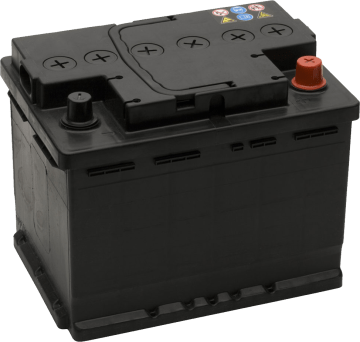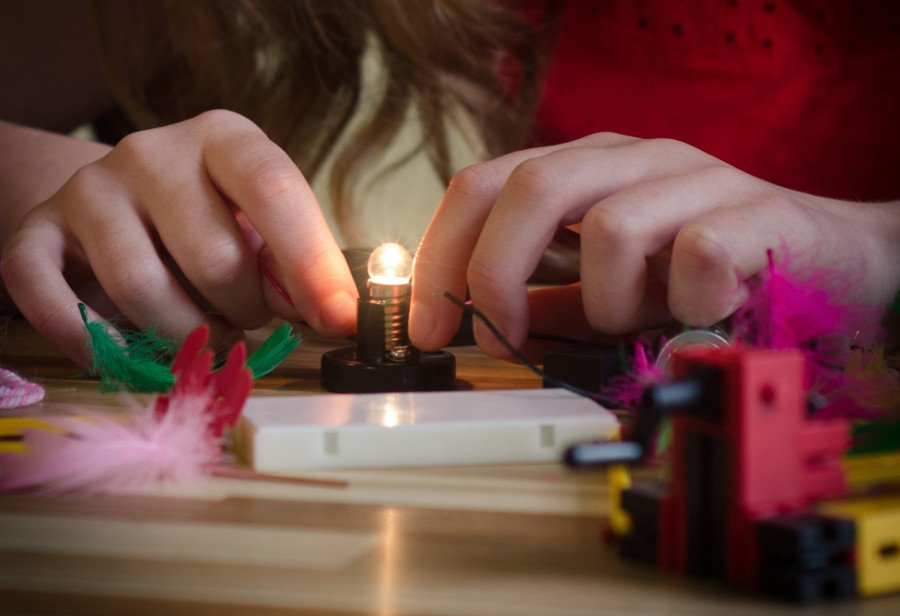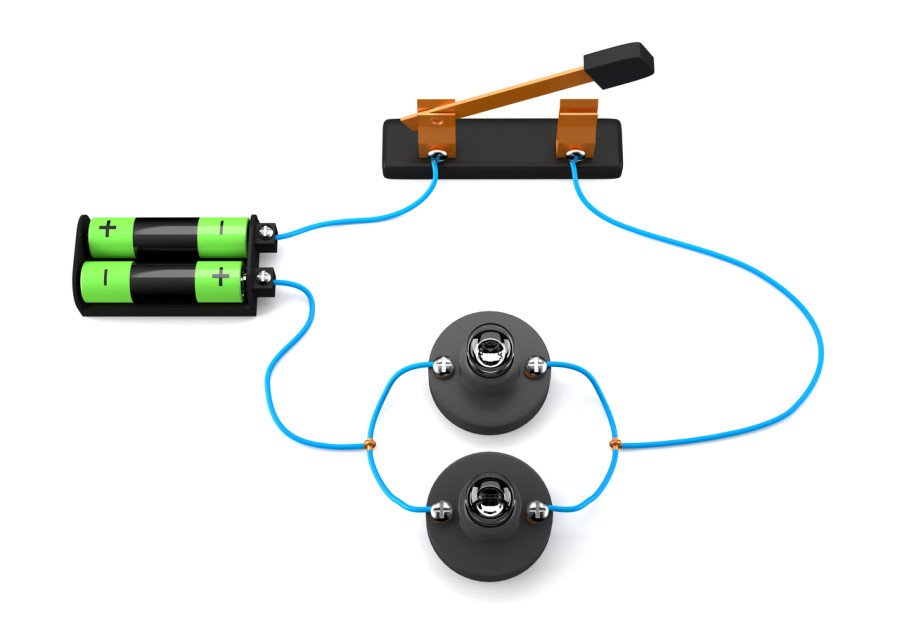Investigating circuits
Explore the flow of electrons with a fun activity that has students standing up and moving around, then build and explore the difference between series and parallel circuits.
- Grade 9
- 2 activities
- 1.7 hours

Big idea
Electric current is the flow of electric charge.
Learning objectives
Students will be able to:
- Explain how electrons flow (or stop flowing) through a circuit
- Create a variety of simple circuits
- Create series and parallel circuits
- Record and interpret their observations including voltage measurements
- Create accurate schematic diagrams
- Demonstrate the safe use of materials and procedures
Activities
BC curriculum fit
Grade 9 Science
Content
- Voltage, current and resistance
- Circuits
Grade 9 Science
Curricular competencies
Questioning and predicting
- Demonstrate a sustained intellectual curiosity about a scientific topic or problem of personal interest
- Make observations aimed at identifying their own questions, including increasingly complex ones, about the natural world
Planning and conducting
- Collaboratively and individually plan, select, and use appropriate investigation methods, including field work and lab experiments, to collect reliable data (qualitative and quantitative)
- Ensure that safety and ethical guidelines are followed in their investigations
Processing and analyzing
- Experience and interpret the local environment
- Use scientific understanding to identify relationships and draw conclusions
- Seek and analyze patterns, trends, and connections in data, including describing relationships between variables (dependent and independent) and identifying inconsistencies
- Use knowledge of scientific concepts to draw conclusions that are consistent with evidence
- Analyze cause-and-effect relationships
Evaluating
- Evaluate their methods and experimental conditions, including identifying sources of error or uncertainty, confounding variables, and possible alternative explanations and conclusions
- Describe specific ways to improve their investigation methods and the quality of the data
Applying and innovating
- Transfer and apply learning to new situations
- Generate and introduce new or refined ideas when problem solving
Communicating
- Express and reflect on a variety of experiences, perspectives, and worldviews of place
- Communicate ideas, findings and solutions to problem
- Formulate physical or mental theoretical models to describe a phenomenon
Assessments
Worksheets guide the circuit building activities for students and allow you to formatively assess their developing abilities to communicate their observations, analysis and conclusions.
Rubrics are provided to guide your observations of the hands-on activities and the ability to follow safety procedures.
Background info
The activities in this unit focus on electricity and how it flows through electrical circuits. Students learn that an electric current is the flow of an electric charge through a conductor. They build circuits and measure voltage with a voltmeter and current with an ammeter. They also read and create circuit diagrams to analyze and represent circuits.
Important safety reminders are included in each of the circuit-building activities.



